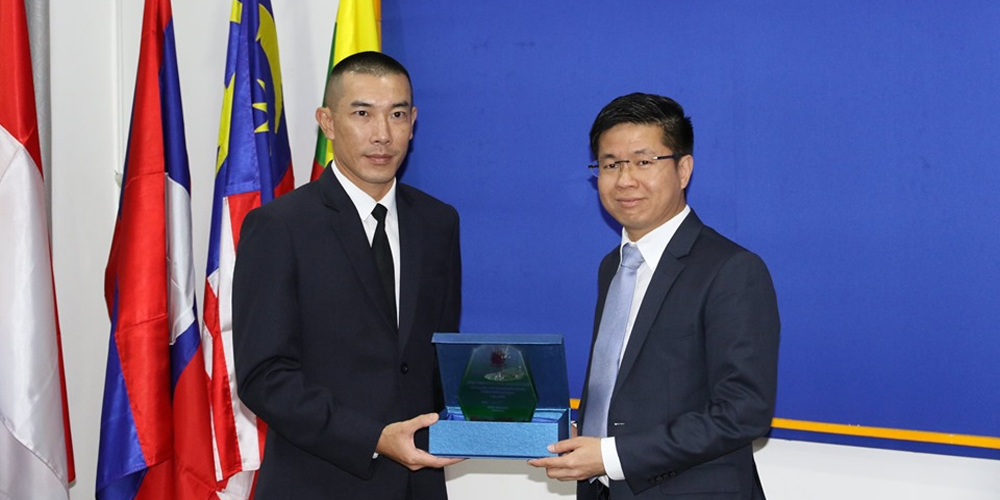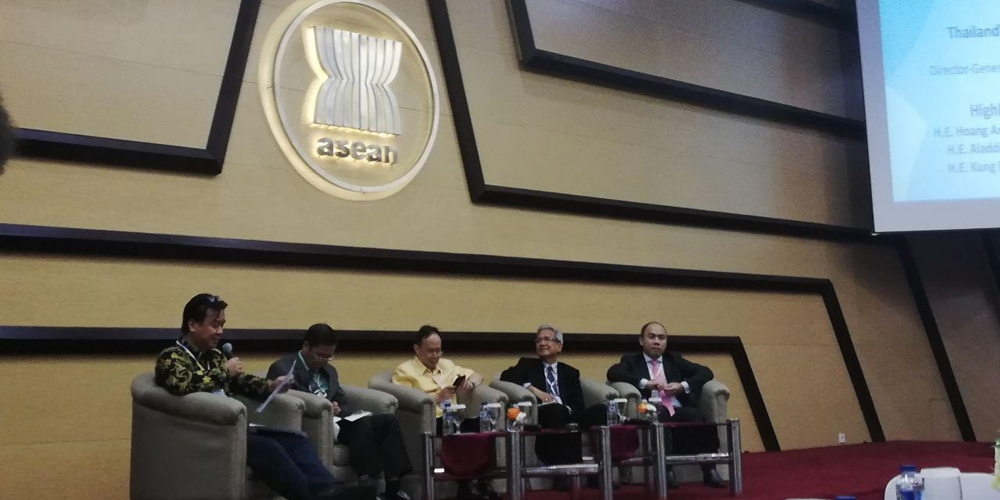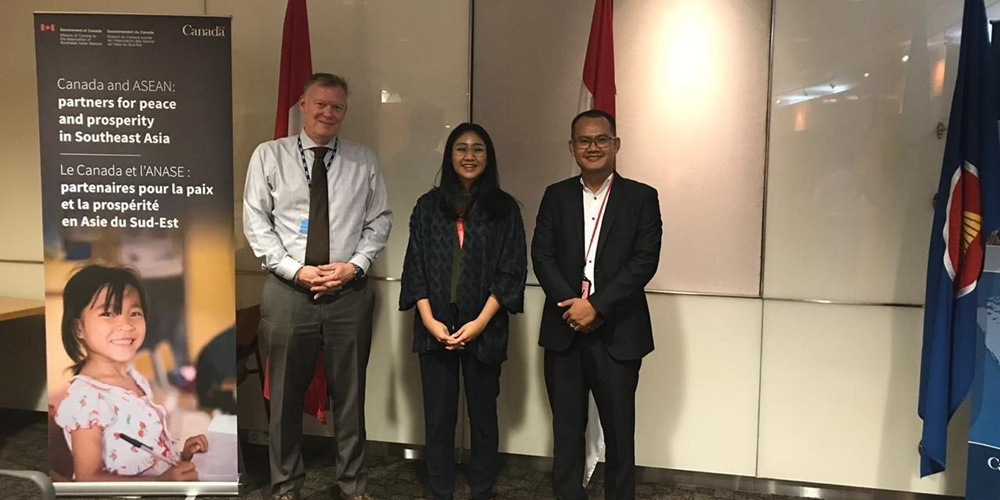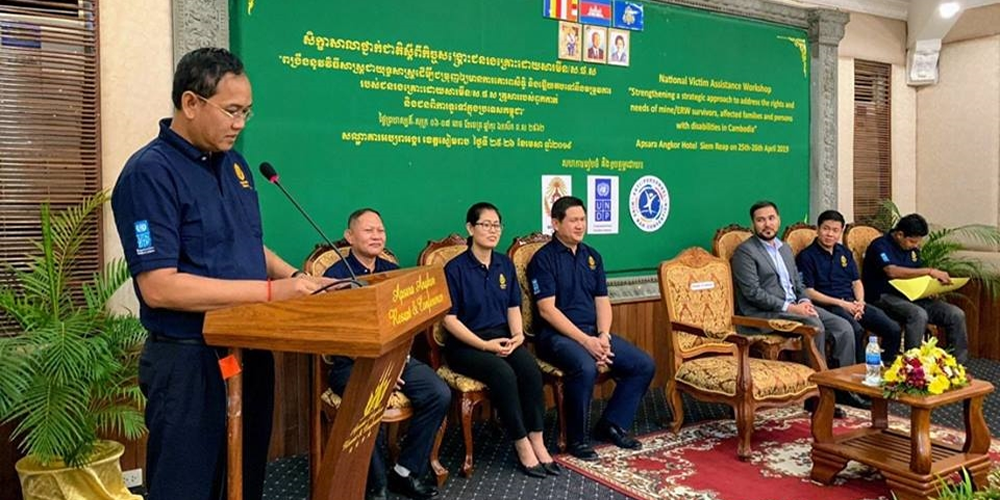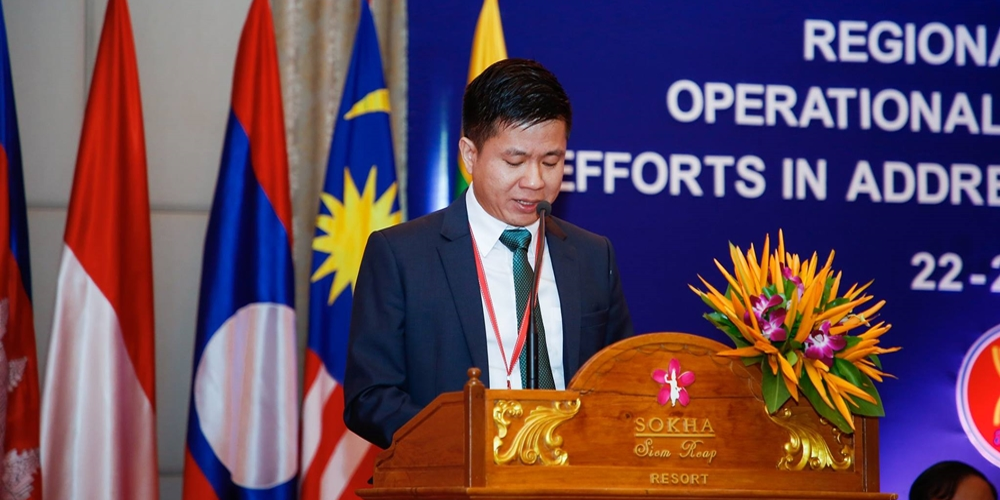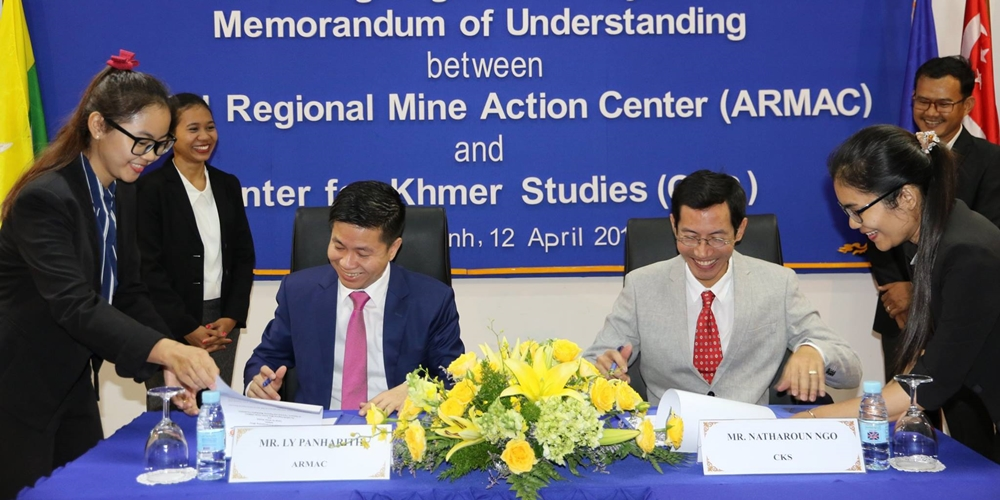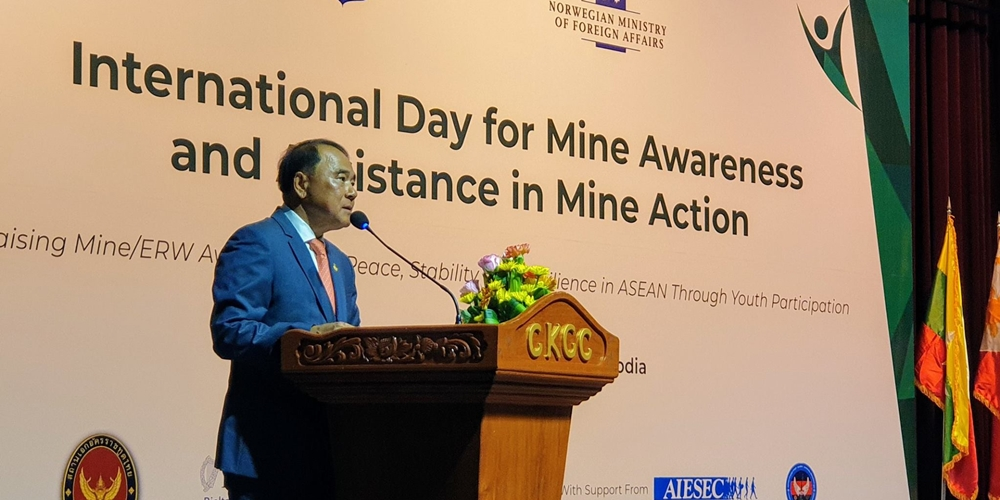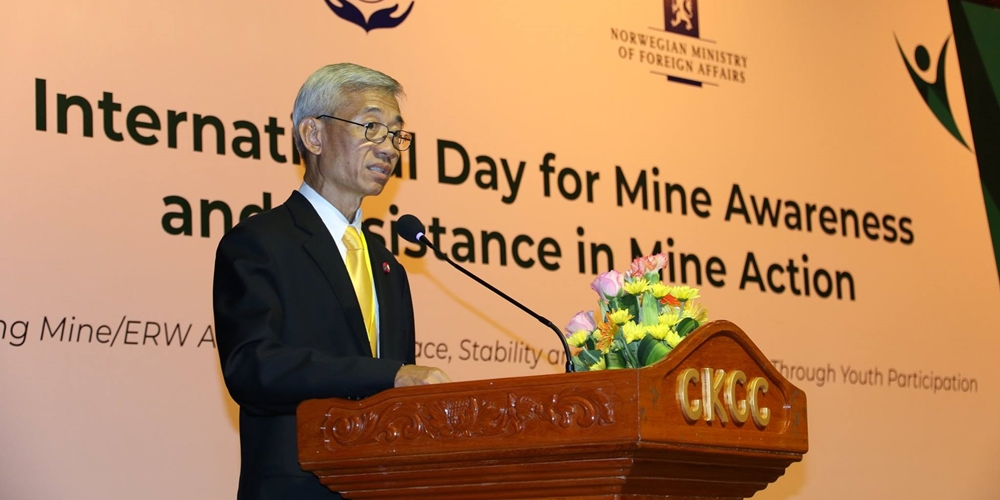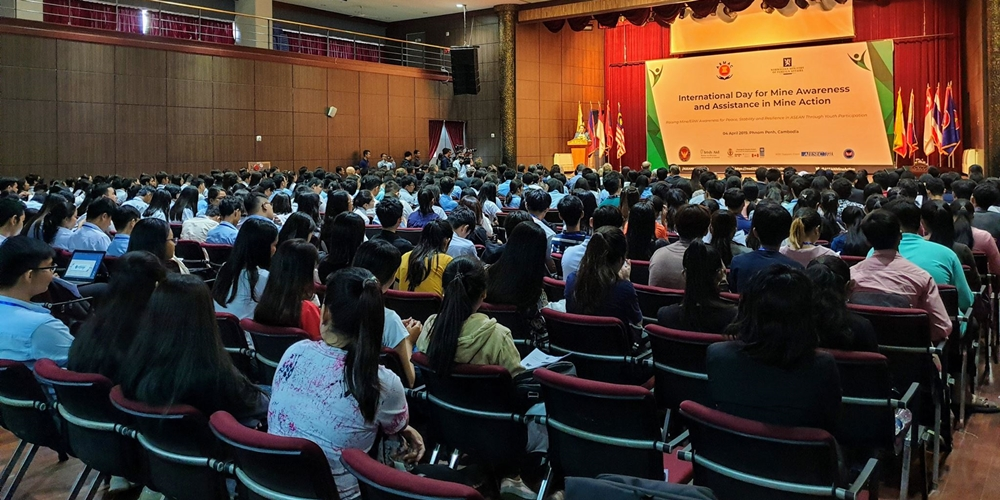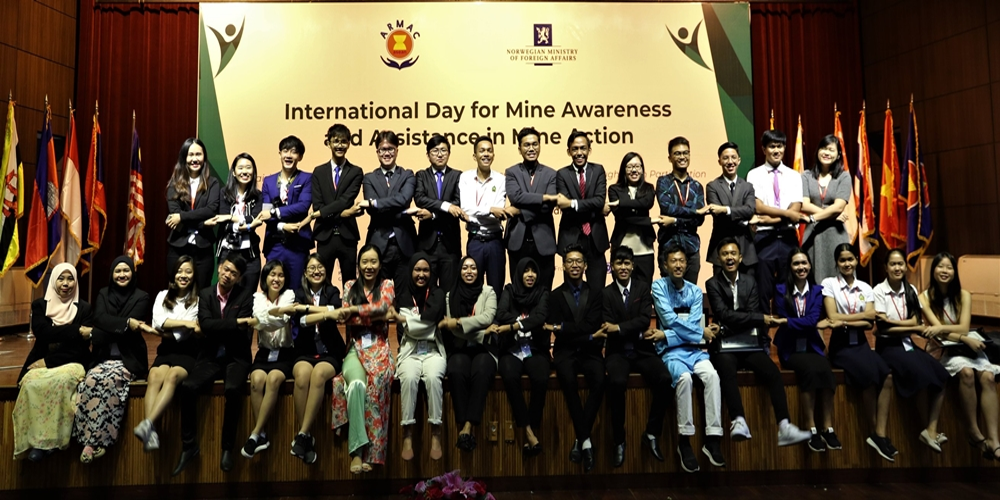Today, ARMAC had the great pleasure to welcome thirty three cadets from the Chulachomklao Royal Military Academy (CRMA) based in the Kingdom of Thailand to our headquarters in Phnom Penh. The visit gave the cadets an opportunity to learn about the role of ARMAC and how we assist ASEAN Member States in mine action.

ARMAC Welcomes Cadets From Thailand…
ARMAC Welcomes Cadets From Thailand
Today, ARMAC had the great pleasure to welcome thirty three cadets from the Chulachomklao Royal Military Academy (CRMA) based in the Kingdom of Thailand to our headquarters in Phnom Penh. The visit gave the cadets an opportunity to learn about the role of ARMAC and how we assist ASEAN Member States in mine action.
(ARMAC 04 June 2019)
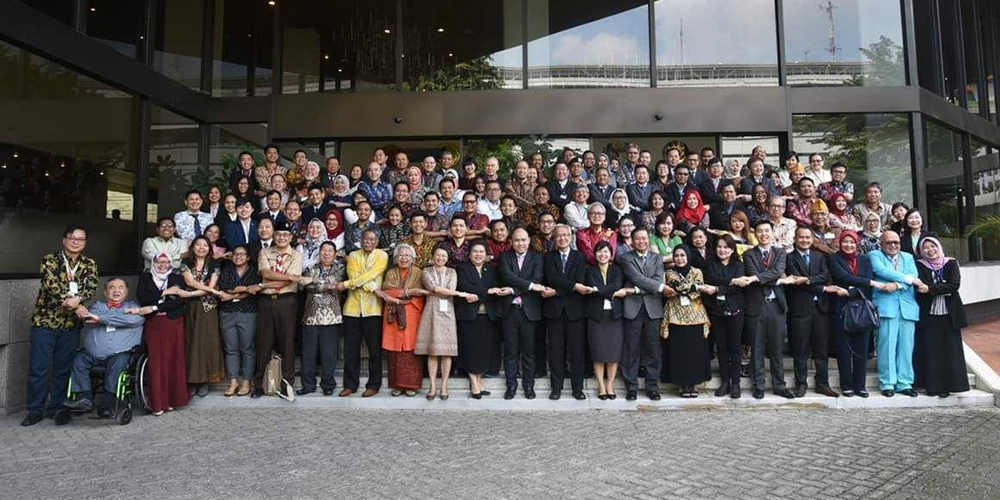
3rd Forum of Entities Associated with ASEAN
In April ARMAC attended the 3rd Forum of Entities Associated with ASEAN in Jakarta, Indonesia, where we shared our positive experiences of working in the ASEAN family.
Beyond the Forum we also took the opportunity to meet with the Japan-ASEAN Integration Fund Team, and the Finance and PCPMD Teams of the ASEAN Secretariat to further build our knowledge on financial and project reporting mechanisms.
In addition, ARMAC also paid a visit to the Mission of Canada to ASEAN to extend our thanks and appreciation for their financial support of the Inaugural Mine Action Regional Workshop held in Siem Reap, Cambodia, in late 2018.
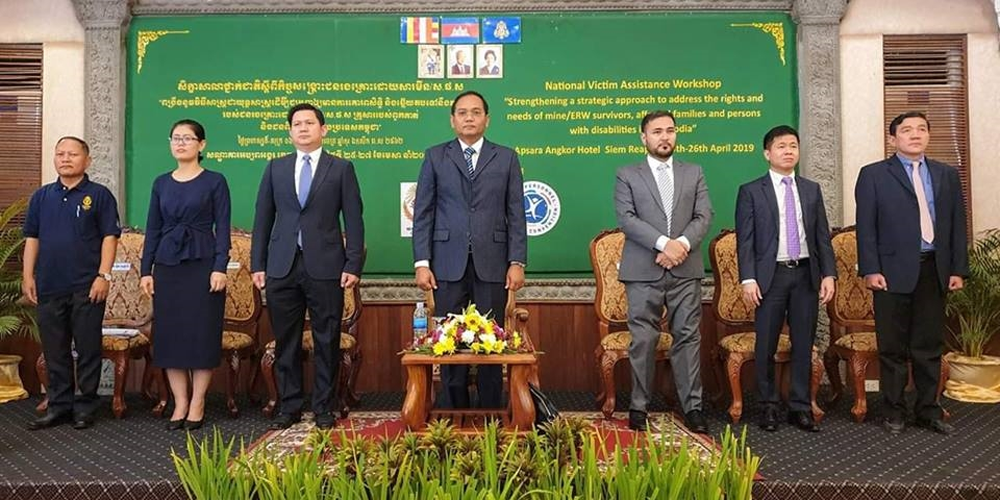
Cambodian National Victim Assistance Workshop
ARMAC had an opportunity to attend and assisted the National Victim Assistance Workshop: “Strengthening a strategic approach to address the rights and needs of mine/ERW survivors, affected families and persons with disabilities in Cambodia,” held on 25-26 April 2019 in Siem Reap, Cambodia.
The event comprised of presentations from victim assistance stakeholders and group discussion particularly on the victim assistance situation in Cambodia.
Photos provided by អាជ្ញាធរមីន – Cambodian Mine Action Authority.
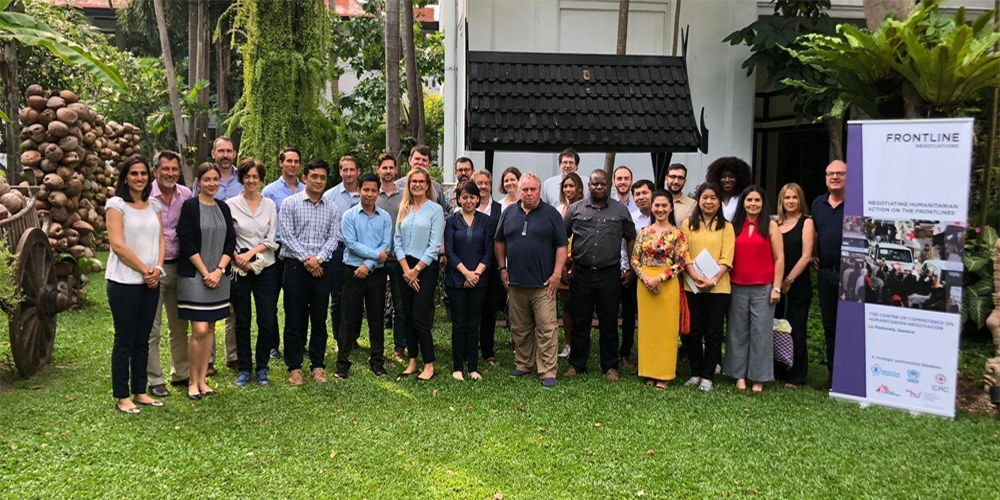
Peer Workshop on Frontline Humanitarian Negotiation
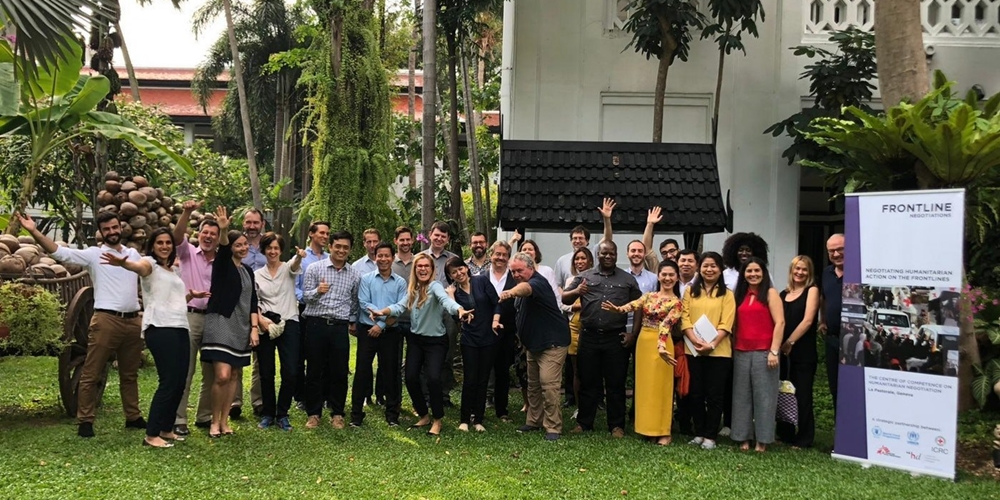
ARMAC recently had the opportunity to attend the Peer Workshop on Frontline Humanitarian Negotiation organised by the Centre of Competence on Humanitarian Negotiation in Bangkok, Thailand.
The Workshop provided participants with key knowledge on the process of negotiation and how to best build strong relationships with counterparts, as well as providing a platform for attendees to share their own experiences.
We would also like to extend our thanks to the International Committee of the Red Cross Cambodia for supporting ARMAC in attending the event.
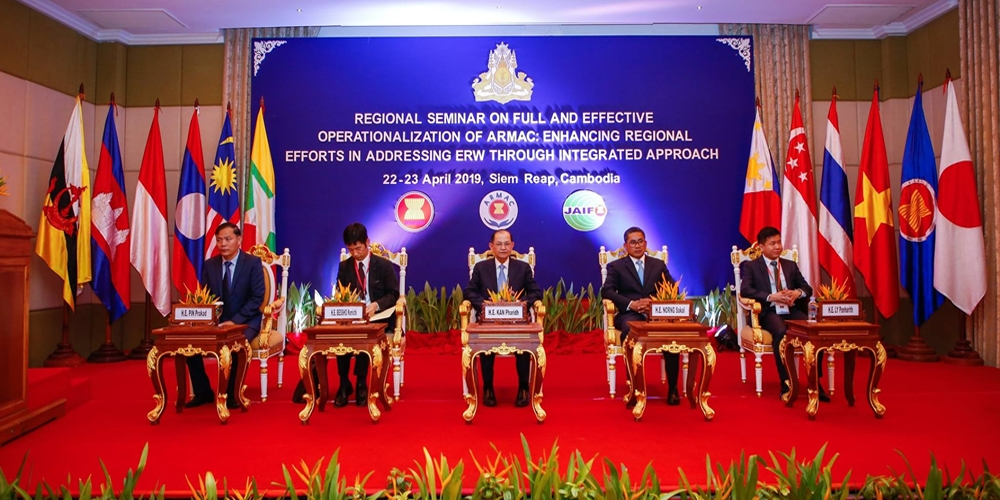
Regional Seminar on the Full and Effective Operationalisation of ARMAC
ARMAC had the honour of being a part of the Regional Seminar on the Full and Effective Operationalisation of ARMAC on 22-23 April 2019 in Siem Reap, Cambodia, organised by the Ministry of Foreign Affairs and International Cooperation – MFA.IC . This two-day seminar covered the discussion on experiences and best practices in addressing mines/ERW in the ASEAN region, the progress and development of ARMAC, the roles of ARMAC in enhancing regional efforts through integrated approach as well as ARMAC’s financial sustainability in the recent and upcoming years.
The seminar also included a field visit to the Cambodian Mine Action Center’s – CMAC’s training facility and Peace Museum. The demonstration of Mine Detection Rats by APOPO’s HeroRATs and Mine Detection Dogs by CMAC were also made during the visit.
This seminar had active participation from delegates from the ASEAN Member States, ASEAN Secretariat, Mine Action Centre/Authority, Mine Action related organisations in the ASEAN region, Research Institutions and other Development Partners. Much appreciation was extended to all delegates for their continued support of ARMAC.

Regional Seminar on the Full and Effective Operationalisation of ARMAC
Regional Seminar on the Full and Effective Operationalisation of ARMAC
ARMAC had the honour of being a part of the Regional Seminar on the Full and Effective Operationalisation of ARMAC on 22-23 April 2019 in Siem Reap, Cambodia, organised by the Ministry of Foreign Affairs and International Cooperation – MFA.IC . This two-day seminar covered the discussion on experiences and best practices in addressing mines/ERW in the ASEAN region, the progress and development of ARMAC, the roles of ARMAC in enhancing regional efforts through integrated approach as well as ARMAC’s financial sustainability in the recent and upcoming years.
The seminar also included a field visit to the Cambodian Mine Action Center’s – CMAC’s training facility and Peace Museum. The demonstration of Mine Detection Rats by APOPO’s HeroRATs and Mine Detection Dogs by CMAC were also made during the visit.
This seminar had active participation from delegates from the ASEAN Member States, ASEAN Secretariat, Mine Action Centre/Authority, Mine Action related organisations in the ASEAN region, Research Institutions and other Development Partners. Much appreciation was extended to all delegates for their continued support of ARMAC.
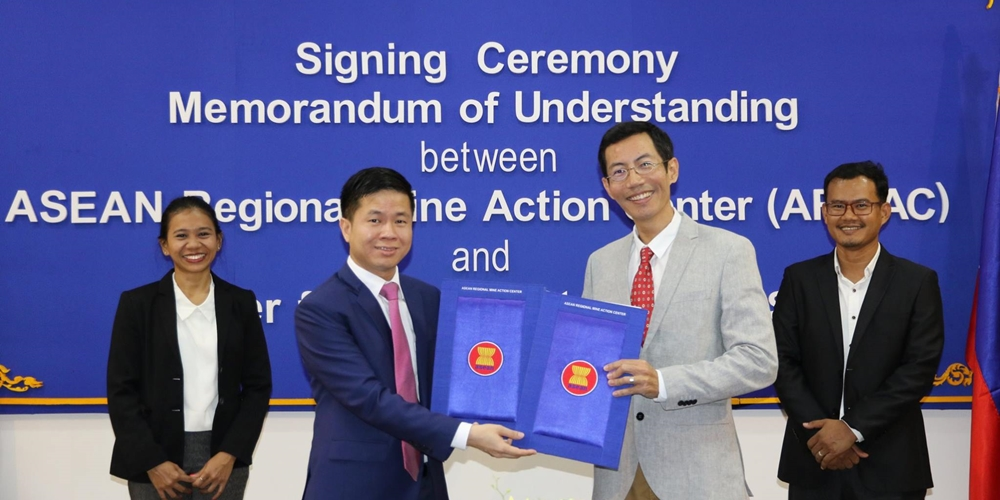
Signing Ceremony of the MoU between ARMAC and CKS
Signing Ceremony of the MoU between ARMAC and CKS
On 12 April 2019, Mr. Ly Panharith represented ASEAN Regional Mine Action Center (ARMAC) and Mr. Natharoun Ngo represented the Center for Khmer Studies (CKS), who signed MoU on Research, Technical and Resource Mobilisation Cooperation.

Signing Ceremony of the MoU between ARMAC and CKS
On 12 April 2019, Mr. Ly Panharith represented ASEAN Regional Mine Action Center (ARMAC) and Mr. Natharoun Ngo represented the Center for Khmer Studies (CKS), who signed MoU on Research, Technical and Resource Mobilisation Cooperation.
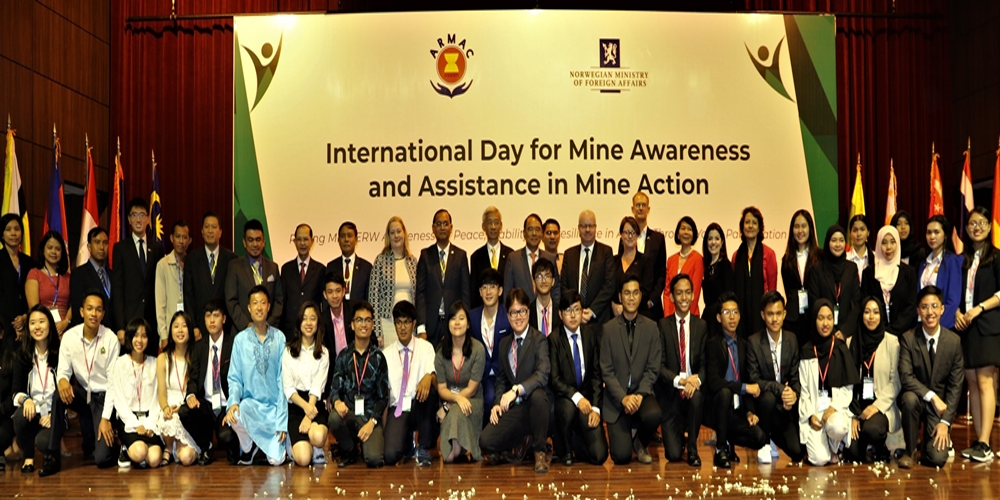
International Mine Awareness Day 2019 Seminar
On 4 April 2019, close to 400 attendees gathered to mark the 2019 International Day for Mine Awareness and Assistance in Mine Action hosted by ARMAC, with funding support from the Government of Norway, the Royal Thai Government, the Government of Ireland, and the Clearing for Results Project.
Celebrated under the theme of “Raising Mine and Explosive Remnants of War (ERW) Awareness for Peace, Stability and Resilience in #ASEAN through Youth Participation” the day saw 32 sponsored university students join a seminar to learn about the dangers of mines/ERW and efforts to address them.
The day was opened by H.E. Mr. Panyarak Poolthup, Ambassador Extraordinary and Plenipotentiary of the Kingdom of Thailand to the Kingdom of Cambodia and Chair of ARMAC Steering Committee, and H.E. Mr. Morten Høglund, Norway’s Dedicated ASEAN Ambassador, who both highlighted the significance of the day and the students’ important efforts.
H.E. Mr. LY Thuch, Senior Minister and First Vice President of the Cambodian Mine Action and Victim Assistance Authority (CMAA) delivered the keynote address and toured an exhibition of the student’s artworks and essays, which were produced as part of the student’s efforts to spread awareness on the impacts of mines/ERW.
Closing out the day, the students were presented with certificates to thank them for their participation and to acknowledge their commitment to act as youth ambassadors by sharing mine/ERW information with their peers and youth communities.
For more information about the event, visit ARMAC’s Mine Awareness Day 2019 Website.
(ARMAC 04 April 2019)

